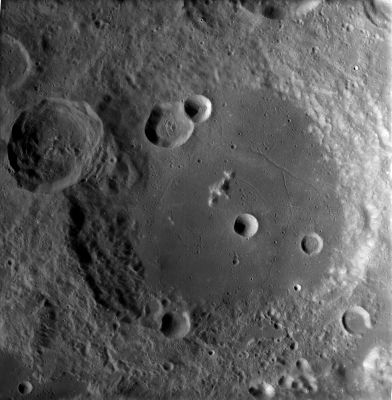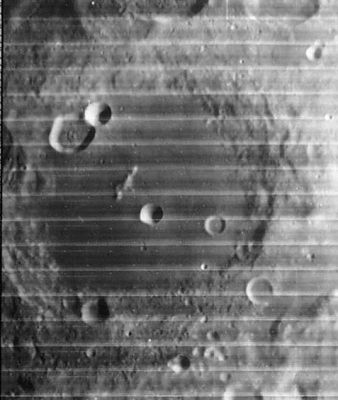Cleomedes
Contents
Cleomedes (with Rimae Cleomedes on its floor)
|
Lat: 27.46°N, Long: 55.51°E, Diam: 130.77 km, Depth: 3.86 km, Rükl: 26, Nectarian |
Left: LROC mosaic image (WAC No.'s M119490013ME, M119483236ME, M119496821ME). Calibrated by LROC_WAC_Previewer.
Right: LOIV-054-H3
Images
LPOD Photo Gallery Lunar Orbiter Images Apollo Images
It would be interesting to try to search Cleomedes and nearby Delmotte on oblique Fairchild-camera photographs made during the missions of Apollo 15 and Apollo 17. - DannyCaes May 13, 2015
Cleomedes was captured during Revolution 27 of Apollo 17. This crater is noticeable near the central part of the curved horizon in north-looking frame AS17-M-0923 (Mare Crisium in the foreground).
Research Danny Caes
Maps
(LAC zone 44A3) LAC map Geologic map
- IAU page: Cleomedes
Description
Description: Elger
(IAU Directions) CLEOMEDES.--A large oblong enclosure, 78 miles in diameter, with massive walls, varying in altitude from 8000 to 10,000 feet above the interior. The most noteworthy features in connection with the circumvallation are the prominent depressions on the E. wall. Under a rising sun, when about one-fourth of the floor is in shadow, three of these can be easily distinguished, each resembling in form the analemma figure. There are two other curious depressions at the S.E. end of the formation. On the dark steel-grey floor are two irregular dusky areas, and a narrow but bright central mountain, on which, according to Schmidt, stand two little craters. There are two ring-plains on the S.E. quarter, and a group of three associated craters on the N. side, one of which (A) Schroter believed came into existence after he commenced to observe the formation, a supposition that has been shown by Birt and others to be very improbable.
Description: Wikipedia
Additional Information
- Depth data from Kurt Fisher database
- Westfall, 2000: 3.86 km
- Cherrington, 1969: 4.35 km
- Central peak height
- Sekiguchi, 1972: 1 km. Attached hills are 0.5 km and 0.4 km. - fatastronomer fatastronomer
- Boint measured the depth using LTVT and a personal photo to be between 3800m-4500m at longitude 58.52E and Latitude 28.26N.- fatastronomer fatastronomer
- Satellite craters Cleomedes A and B are on the ALPO list of bright ray craters.
- Satellite crater Cleomedes A is on the ALPO list of banded craters
- Cleomedes and Cleomedes E (the largest crater within Cleomedes) are floor-fractured craters. Cleomedes has very narrow rilles, but E has broader ones.
Nomenclature
- Cleomedes (unkn-c. 50 B.C.) was a Greek astronomer who is known chiefly for his book On the Circular Motions of the Celestial Bodies.
- Named by Riccioli (1651) - called Moura by Langrenus and Montes Riphaei by Hevelius.
- Cleomedes Alpha (the somewhat elongated central peak of Cleomedes) (see also chart SLC A3) (System of Lunar Craters).
LPOD Articles
Cleomedes Unveiled. LPOD (Repeat 10/6) Cleomedes Unveiled The Northern Moat Cleo 3
Bibliography
Named Featues -- Prev: Clavius -- Next: Rima Cleomedes

